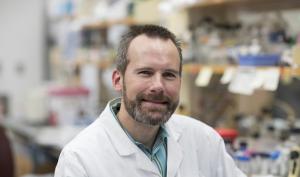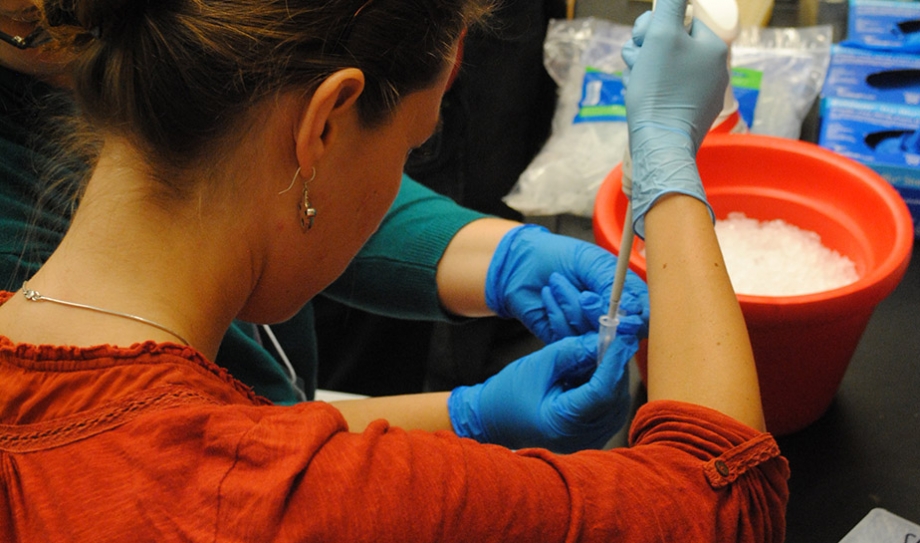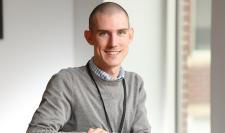
In soccer and hockey, they call it a hat trick when an athlete scores three times in a single game. In cricket, where the phrase was first used in 1858, a hat trick happens when the same bowler takes three wickets with successive balls.
If scientific research had hat tricks like athletes, Kevin Janes would have fans screaming in the stands.
Janes, a University of Virginia professor of biomedical engineering, and his research team earned their own hat trick of three published papers in Volume 81, Issue 7 of the scientific journal Cancer Research, one of the leading journals in oncology. That’s a stunning publishing accomplishment, however, the advancements they’ve made to the study of cancer have the potential to be the biggest win for humanity.
Janes’ lab at UVA Engineering focuses on the development of experimental and computational approaches for analyzing cell signaling—especially as applied to cancer biology where such signal processing has gone amiss.
The human body is made up of trillions of cells that grow and divide as the body needs them. The normally stable process of cell growth depends on cells sending and receiving information, or signals, from outside, affecting cell regulation.
Old cells eventually die and are replaced by new cells, but over time, some may become damaged or abnormal and not die. These extra cells may begin to divide rapidly and form tumors. Inside the new cancer cells, the mechanisms for regulating proliferation, cell death and migration through signaling are disrupted.
Research in cell signaling has informed how to predict and treat various cancers. But the complexity of signaling networks has been a challenge to study, especially when looking at the misregulation of single cancer cells.
The three papers featured in the April 1 issue of Cancer Research are the culmination of five years of research by the Janes Lab and Janes' collaborators from the UVA School of Medicine — financially supported by $1.2 million in funding from the National Cancer Institute.
“We were supported to address a ‘Provocative Question’ posed by the National Cancer Institute about methods for characterizing the functional states of individual cells in solid tumors. The publications are applications of our method to three solid tumor types. Each paper has its own findings specific to the cancer type, and together they make a compelling case that our approach is ready to tackle challenges in single-cell cancer biology more generally,” said Janes, who serves on the Council of Extramural Research at the American Cancer Society and is a member of the Board of Reviewing Editors for Science Signaling.

The papers reflect the next steps in the group’s research advancing a statistical analysis technique that Janes originally devised in 2010 called stochastic profiling. The method involves repeated, random selection of very small groups of cancer cells microdissected from tumors followed by a customized measurement approach that quantifies all the genes expressed in the microdissected sample. Measuring gene expression in small groups is much more sensitive and reproducible than measuring single cells, and Janes’ latest papers identify genes never before detected in single-cell datasets.
Determining meaningful variability in gene regulation among cells is a common goal of researchers in virtually every area of medical research. For instance, investigators who can pinpoint significant differences among tumor cells have the basis for explaining why some cells respond to a medication and others don’t.
The prevalent approach to determining variation is to analyze cells individually. The problem for Janes is that the cells must be removed from their environment before they can be examined, which can alter cell regulation and the abundance of gene expressed. For his method, tumor samples are immediately frozen within a few minutes of obtaining them, which Janes argues is important for preserving the native regulatory states of cancer cells.
To obtain sufficient material for analysis, Janes takes many random 10-cell samples of cancer cells from the tumor he wants to analyze. He then statistically analyzes the 10-cell samples to enable him to identify collections of cells that are starkly different from others in the tumor.
“If we think of a tumor as a collection of red and green balls in a hat, the challenge is that single-cell methods have some red-green colorblindness to them. Our method mixes groups of 10 cells together in different combinations so that we can look at fluctuations in red + green = yellow that are distinguished more reliably.”
For these three papers, Janes’ research team included primary authors and UVA Engineering alumni Shambhavi Singh, who earned a Ph.D. in 2020 and will earn an M.D. this year; Matthew Sutcliffe, who earned a bachelor's degree in 2016 and then was a post-bac researcher; and Dylan Schaff, who earned a bachelor's degree in 2019. The team applied Janes' analytical approach to understanding how tumors form in breast cancer, lung cancer and premalignant brain cancer. The results pointed to a variety of genes that were regulated differently in single cells, providing important starting points for the next round of investigation.
“These measurement approaches enable us to observe cancers in an unbiased way,” Janes said. “Now comes the hard part - determining which gene regulations are important for driving the cancers to form or progress, and distinguishing them from ones that just come along for the ride."


